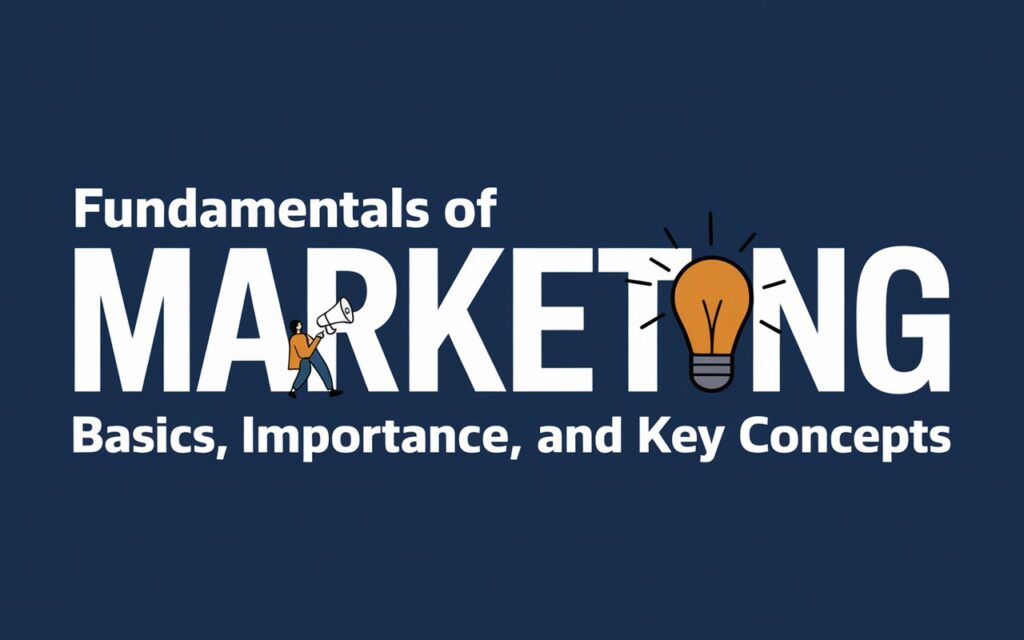1. Introduction to Target Audience
In marketing, knowing your target audience is fundamental to building successful campaigns and driving engagement. A target audience is a specific group of people most likely to respond positively to a product or service. Identifying and understanding this group allows businesses to tailor their messaging, products, and marketing strategies to meet the audience’s unique needs and preferences.

2. Why Knowing Your Target Audience Matters
Understanding your target audience is crucial because it:
- Enhances Marketing Efficiency: By targeting specific groups, businesses can focus resources on channels, platforms, and content that will reach the right people.
- Increases Customer Engagement: Tailored messages that speak directly to the audience’s interests and needs are more engaging and likely to lead to conversions.
- Improves Customer Retention: Understanding the audience helps businesses build stronger relationships by consistently meeting customer expectations.
- Boosts Return on Investment (ROI): Marketing to a defined audience reduces wasted spend on irrelevant leads, increasing the efficiency and profitability of campaigns.
- Guides Product Development: Knowing what a target audience values can shape product features, design, and improvements.
3. Key Components of a Target Audience Profile
When building a target audience profile, consider these key components:
- Demographics: Age, gender, education level, income, occupation, and marital status help paint a picture of the audience’s basic characteristics.
- Geographics: Location, including country, region, city, or neighborhood, informs localized marketing and product distribution strategies.
- Psychographics: Interests, lifestyle, values, and opinions give insight into the motivations and preferences driving purchasing decisions.
- Behavioral Traits: Purchasing behavior, brand loyalty, and buying frequency reveal patterns in how the audience interacts with products or services.
- Pain Points and Needs: Identifying common problems or needs the target audience faces allows businesses to position their offerings as solutions.
4. Methods to Identify Your Target Audience
Here are effective ways to define and understand your target audience:
- Market Research and Surveys: Surveys, focus groups, and interviews provide direct insight into customer demographics, preferences, and pain points. Use open-ended questions for richer data.
- Social Media Insights: Social media platforms offer analytics tools that reveal user demographics, interests, and engagement patterns.
- Customer Feedback and Reviews: Analyzing reviews and feedback allows businesses to see what customers love and what areas need improvement.
- Competitor Analysis: Understanding who competitors are targeting can provide clues about potential audience segments you may want to reach.
- Google Analytics: Website analytics show demographic data, interests, and behavior patterns of visitors, giving insights into who is engaging with your content.
- Sales Data and CRM Tools: Sales data provides historical insights into purchasing behavior, customer preferences, and seasonal trends. CRM tools can further segment customer data based on behavior and engagement history.
5. Creating Audience Personas
Once data is collected, creating audience personas can help bring your target audience to life. Personas are fictional representations of typical customers based on real data, and they help guide marketing and product strategies by making it easier to empathize with the customer.
To create an effective persona, include the following:
- Basic Demographics: Name, age, job title, income level, etc.
- Background: Education, family situation, and any relevant personal history.
- Goals and Needs: What they hope to achieve or solve with a product or service.
- Challenges: Obstacles they face that your product can help overcome.
- Preferred Channels: Media sources, social media, or content types they prefer.
Example Persona:
- Name: Sarah, 32
- Job: Marketing Manager at a tech company
- Challenges: Juggling multiple responsibilities and needs tools that save time and boost productivity
- Preferred Channels: LinkedIn, industry blogs, and podcasts
- Goals: Wants effective, time-saving solutions and products to improve team efficiency
6. Segmenting Your Target Audience
After defining your target audience, consider segmenting them based on shared traits or behaviors. Segmentation helps in creating customized campaigns that are more relevant to each group.
Common segmentation approaches include:
- Demographic Segmentation: Based on age, gender, income, etc., to tailor products and campaigns to specific needs.
- Geographic Segmentation: Adjusts messaging or product offerings based on location.
- Psychographic Segmentation: Focuses on values, interests, and lifestyle for more emotionally resonant marketing.
- Behavioral Segmentation: Targets customers based on behaviors, such as past purchases or engagement history.
7. Best Practices for Understanding and Engaging Your Audience
- Regularly Update Audience Data: Preferences, needs, and behaviors can evolve, so keep audience insights fresh with regular research.
- Monitor Trends and Insights: Staying informed on trends within your target audience’s demographic ensures you remain relevant.
- Personalize Communication: Use audience data to personalize messaging, increasing engagement by showing customers you understand them.
- Leverage Multi-Channel Marketing: Engage with audiences where they are most active, from social media and email to events and ads.
- Test and Optimize: Continuously test different approaches to messaging, content types, and channels to see what resonates best with your audience.
8. Common Mistakes to Avoid in Target Audience Identification
Avoid these pitfalls when defining and marketing to your target audience:
- Assuming Audience Needs Without Research: Avoid assuming what your audience wants; rely on data to validate assumptions.
- Overlooking Niche Audiences: Niche markets can be highly profitable, so explore sub-segments within your main audience.
- Failing to Adapt as Trends Change: Regularly update your audience profile to reflect shifting trends and preferences.
- Ignoring Negative Feedback: Pay attention to negative feedback as much as positive; it can reveal unmet needs or issues with your offering.
9. Adapting Your Marketing Strategy Based on Audience Insights
With a defined target audience, you can:
- Craft Relevant Messaging: Tailor language, tone, and messaging to resonate with the specific values and preferences of the audience.
- Choose the Right Marketing Channels: Focus efforts on the channels where your audience is most active.
- Optimize Product Development: Develop or improve products to better align with the audience’s preferences and needs.
- Implement Targeted Campaigns: Run campaigns specifically for each audience segment, enhancing relevance and engagement.
10. Conclusion
Understanding your target audience is one of the most critical components of effective marketing. By defining who they are, what they want, and how they behave, businesses can deliver relevant messages, products, and experiences that foster loyalty and drive growth. A deep understanding of your audience not only strengthens customer relationships but also informs nearly every aspect of a marketing strategy—from product development to ad placement. Regularly refining this understanding is essential to staying competitive in today’s dynamic market.





